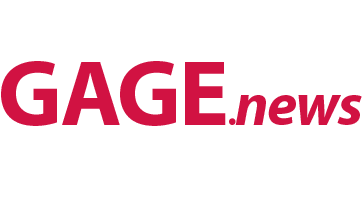A new Harris Poll survey commissioned by Indeed reveals that employers and job seekers alike are feeling the pain of overextended hiring processes.
It takes longer to hire today than it did a year ago — at least, that’s what 42% of employers say in a new Indeed-commissioned Harris Poll survey of North American employers and candidates in the high-salary market. The wait is even more apparent to job seekers, with 57% agreeing that time to hire is growing.
Nearly a third (29%) of employers and 35% of job seekers also say time to hire is a major challenge. But is it actually the problem to solve or just a symptom of larger underlying issues with the hiring process in a rapidly changing world?
“Employers simply have not updated their philosophy on hiring,” said Kyle M.K, senior talent strategy advisor at Indeed. “We’re on a completely different planet than we were five years ago, but for some reason, we’re still using the same operations. It’s causing a lot of stress on both sides.”
Below, we’ll examine the reasons why it takes so long to hire for high-salary positions, what it actually means for employers, and how employers can rethink their hiring strategies with today’s market — and candidates — in mind.
What’s causing the hiring slowdown?
The survey data paints a picture of a major imbalance in the labor market, where too many candidates are competing for too few roles. Meanwhile, employers seem unable, or unwilling, to meet candidate expectations, particularly around compensation.
The compound effect of these issues is apparent not only in the drawn-out hiring process but in the growing chasm between employers and job seekers.
Challenge #1: Too many candidates
More than half (56%) of employers who claim it’s difficult to hire say it’s because there are too many candidates, with 51% of job seekers reporting the same. More than a third (39%) of employers are also seeing more candidates per job opening compared to last year.
Indeed
What’s causing it: Almost half (46%) of employers point to the economy, while 41% say it’s due to better algorithm matching capabilities. Employers will likely continue to see an increase in candidates as more job seekers turn to artificial intelligence (AI) tools to apply to more jobs faster than ever before.
Challenge #2: Too few roles
The perceived lack of available roles also amplifies the “too many candidates” problem. Some 44% of job seekers are seeing fewer job openings, and among job seekers’ top challenges for landing a job, 40% point to a limited number of roles.
Indeed
What’s causing it: Almost three-quarters (74%) of job seekers say the economy, while 45% blame widespread layoffs and restructuring. On the employer side, many are following the Fed's lead and taking a more conservative approach to growth and hiring as global conditions and the economic outlook remain murky.
Challenge #3: Mismatched expectations on pay
Among the most notable data points is a comparison of job seeker and employer perspectives on compensation. Whereas 55% of employers think candidates would be willing to accept a lower salary, only 37% of job seekers say they would take a pay cut in order to get hired in today’s market.
Indeed
What’s causing it: The sobering “expectation vs. reality” nature of this comparison suggests that employers may be overestimating their hand, especially in the high-salary market. It may also be an indication that employers' hiring processes aren’t in line with candidate expectations around salary transparency and fair pay.
Different realities, but a shared frustration
It all boils down to this: People are struggling on both sides of the high-salary hiring equation. But one side may be having a tougher time than the other. Almost half (44%) of employers report that it’s hard to hire for high-salary roles, while nearly two-thirds (64%) of job seekers say it’s difficult to get hired.
Indeed
The disparities in perception around the difficulty of hiring, time-to-hire, and acceptable pay make it clear that employers and job seekers are experiencing different realities when it comes to hiring in the high-salary job market.
Employers are stuck in analysis paralysis, replacing decisions with hesitation to avoid making a costly hiring mistake in today’s climate. Meanwhile, job seekers see a shrinking market with fewer available roles and more competition, especially in high-paying sectors like tech and finance, where layoffs have hit hardest.
The hiring process then becomes a vicious circle of stagnation: As candidates’ sense of urgency to find a job grows, so does their frustration with employers over the time-to-hire. Panicked job seekers then apply to even more jobs, further crowding the talent pipelines and adding more work for recruiters — rinse and repeat.
Build strategies around humans, not processes
Employers don’t have to perpetuate this overextended cycle of hiring. Instead, those who adopt a more human-first approach to hiring can shake some of the more outdated philosophies that can unnecessarily drag out the time to hire.
On the operations side, remember what talent acquisition (TA) teams do best and lean into those strengths. Hint: It’s not writing job descriptions or managing admin work.
“TA builds community,” M.K. said. “A recruiter should be the one building relationships with candidates and making sure the candidate has everything they need to be the best version of themselves for the hiring manager.”
From a strategic standpoint, consider how candidates are being selected to interview for roles. Does it rely primarily on where they’ve been, or can more of the focus go toward assessing their relational skills, such as the more human qualities that measure how a person shows up in a situation? A shift to a skills-first hiring mindset can open the door to uniquely qualified candidates, even when their experience or education isn’t a perfect match.
“Employers need to revisit their role in society as educators to the workforce,” M.K. said. “When people are being trained on day one, that opens up the opportunity to focus on the individual and their capabilities, not their credentials.”
Reimagine hiring for today’s market and tomorrow’s workforce
A few small but strategic shifts — like streamlining operations, rethinking hiring criteria, and embracing a human-first mindset — can go a long way toward bridging the hiring disconnect between employers and job seekers. When employers move faster and focus on fit over perfection, everyone on both sides of the equation benefits.
Better work begins with better hiring. See how.
This post was created by Indeed with Insider Studios.
-->
The post Why hiring for high-salary roles takes longer — and what employers can do to fix it appeared first on Business Insider


